1) 100% Whole Wheat Loaf (120 gr thermophilic sd starter)
Using this whole wheat loaf recipe, substitute 120 gr of thermophilic sd (TH-SD) starter in place of 90 gr flas. Adjust the amount of added water to get 80% hydration of the dough.
Pay particular attention to mixing and overall instructions from Yippee's Simple 100% Whole Wheat with CLAS.
Mix in Zojirushi for 10 min.
- 455 gr freshly ground hard ww flour*
- 20 gr freshly ground ww malt*
- 120 gr TH-SD starter (24g rye grains, 96g water)
- 304 gr water (total flour = 500 gr; 80% hydr: 400 gr water) Set aside 20 gr water to add with salt and yeast. Add water only until dough begins to break.
* Sift and regrind the coarse particles for 35 sec in a spice grinder. Add them back into the flour.
After 10 min., sprinkle in
- 1/2 tsp dry instant yeast (SAF)
- 8-9 gr salt (2%)
Mix for 20 min more.
See pictures and descriptions for the following stages of the dough handling.
- Let rise at 29-30C for 1h 45min - 2h. Do not over ferment. Use poke test.
- Shape dough and let it rise at 31C for about 45 min in loaf pan (in a plastic bag). Do not overferment. Use poke test.
- Bake in Zojirushi. Program: 10 min Preheat followed by 70 min Bake. Check dough temp at around 48-55 min. Range: 202-207F.
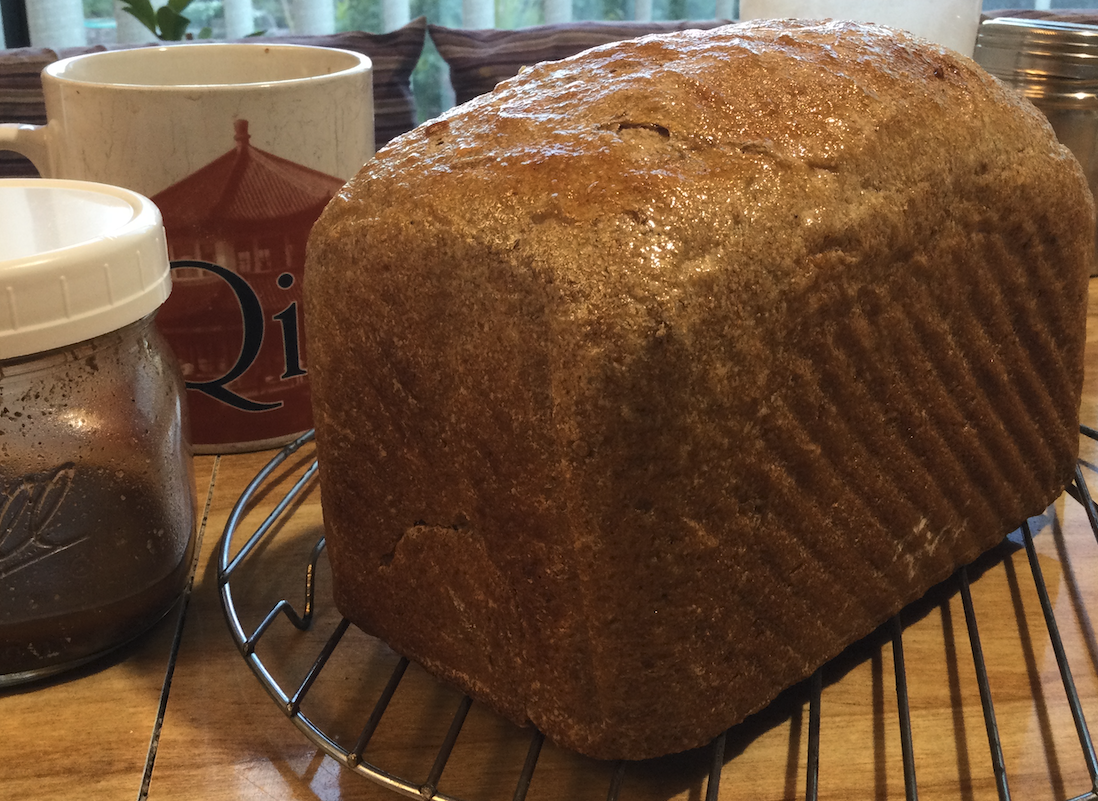
Slices:
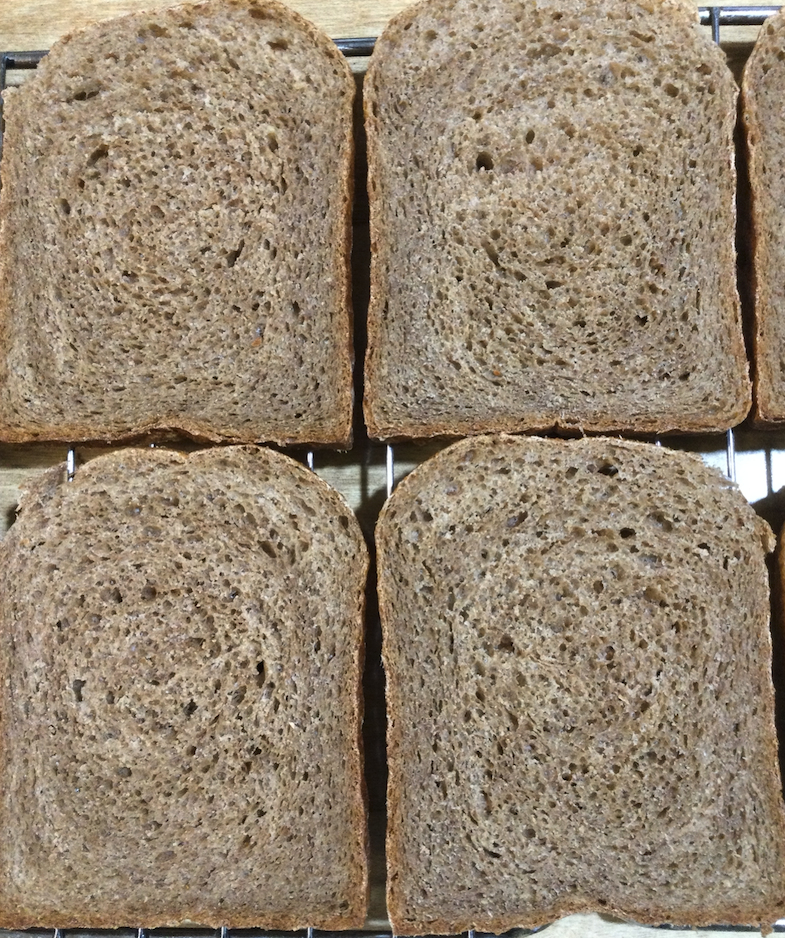
2) rusbrot's Šventinė duona (basic procedure)
VERY BEAUTIFUL, ROUNDED and NUANCED FLAVOR!!
7 STEPS: | 1 MASH (4h) | 2 TH-SD FERMENT (20h) | 3 LIQUID YEAST (3h) |
| 4 PRE-DOUGH (75 min) | 5 DOUGH (45 min) |
| 6 SHAPE/FINAL PROOF (50 min) |
| 7 BAKE: freestanding loaf-steam (10 min 240C/464F);
w'out steam (30 min 200C/392F) |
| alternately: pan loaf -BAKE in Zojirushi |

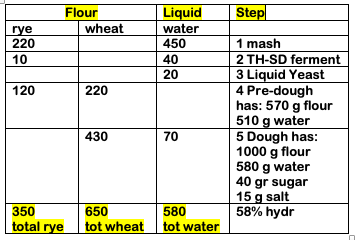
STEP 1
MASH
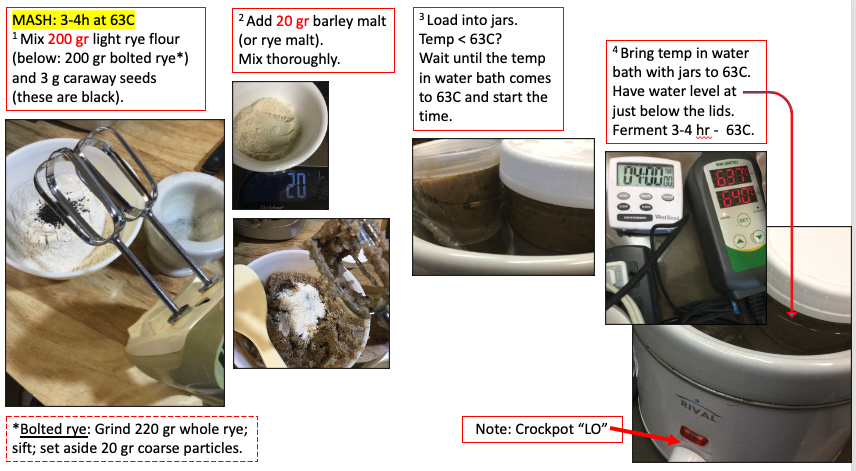
FERMENT 63C for 3-4 h.
Resulting MASH

STEP 2
TH-SD Ferment
Mix
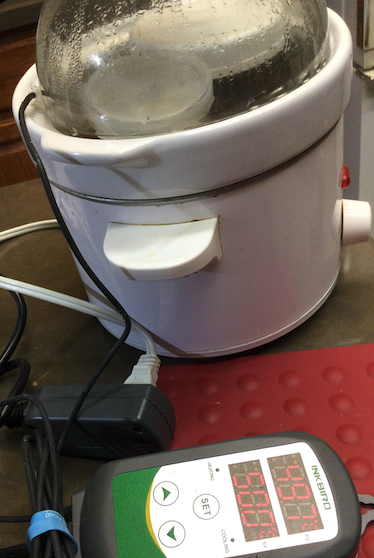
Ferment 50 C for 20 h.
In the remaining steps, the ferments are at 30C.
"Thermophilic LAB do not show activity at 30C, and acidity of the TH-SD is sufficient to prepare wheat-rye dough only with yeast." - (see 3:14 rusbrot)
STEP 3
LIQUID YEAST
MIx
- STEP 2 TH-SD
- 7 gr fresh yeast ( 2.33 gr DIY = 3/4 t)
- 20 ml water

Ferment 30C - 3h.
Step 3 Ferment doubles.
"'liquid yeast' ... nice fruity flavor and swe[et]-sour taste"- (see 3:41 rusbrot)
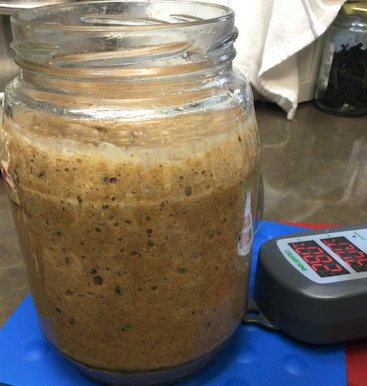
STEP 4
PRE-DOUGH
Mix
- STEP 3 liquid yeast
- 220g wheat flour
- 120 g white (light) rye flour
FERMENT 30C for 1h 15 min.
Step 4 dough is very sticky and it was difficult to incorporate the flour (used Zojirushi mixer 15 min).
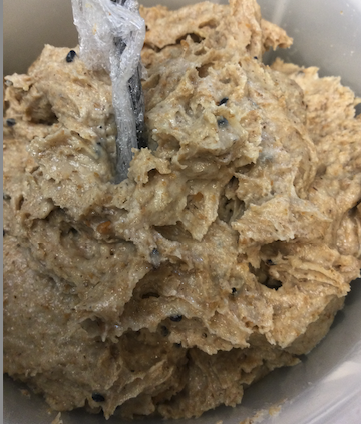
Deviation from Recipe: Interruption in Schedule-Placed the sticky dough in 6C/43F garage overnight (8 hr).
RESULT: Pre-Dough (initially warm) showed 50% increase in volume after 8 hr, 43F.
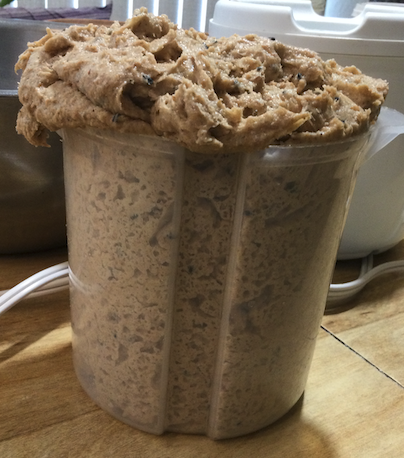
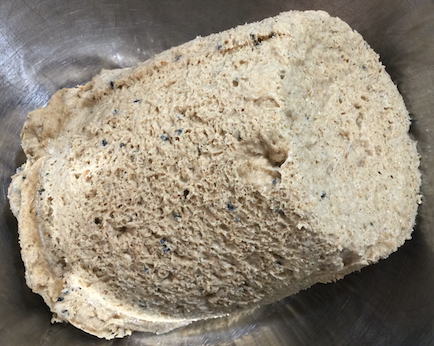
STEP 5
DOUGH
Mix
- STEP 4 PRE-DOUGH
- 40 g sugar
- 430 g wheat flour
- 15-20 gr salt
- 70 ml water
FERMENT 30C for 45 min
Dough Weight in recipe: 1645 g
With Hand Kneading (10 min) and adding water: Dough weight = 1635 g.
Suggestions: Add sugar, salt and water first. Hand knead in a bowl. The dough is silky and supple.
Add flour and knead (on table) until smooth and no lumps. The dough temp reaches 18C.
Place in proofer set at 31C. Wait until dough doubles (2h 15 min).
(Due to cold overnight rest, dough temps while in proofer remain low: 1 hr -19.8C; 2h - 21.5C; did not reach 30C).
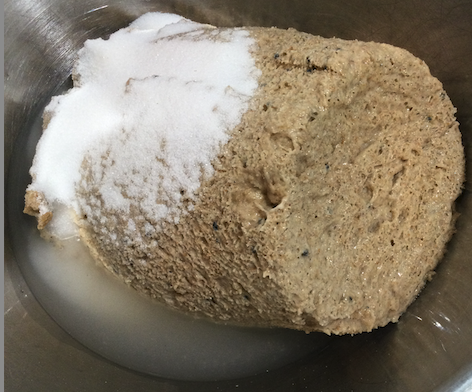
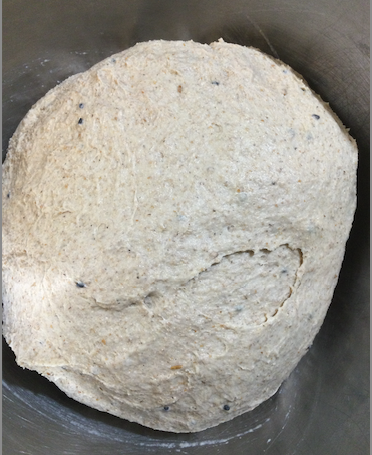
Dough after doubling (2h 15 min) (before shaping):
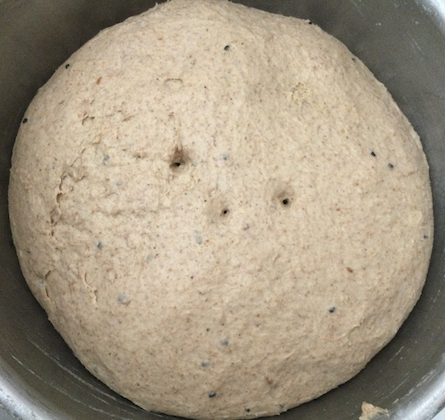
STEP 6
PRE-SHAPE rest 5 min
SHAPE and FINAL PROOF for 45 min
2 Loaves shaped: 1 oval banneton; 1 loaf pan.
Check dough with poke test. (65 min)
Start oven preheating: 240C/464F.
STEP 7
BAKE
1) Oven Bake for Oval Loaf: Turn loaf out of banneton; spray with water and poke holes.
240C/464F in covered pan-10min; 200C/392F with lid off - 30 min. (Lots of mishandling below!)
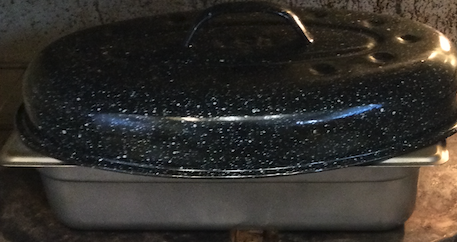
2) Zojirushi Bake for Loaf Pan: Program- 10 min Preheat, 42 min Bake (350-400F); used coating of 1/2 t each of milk powder and milk; poked holes in dough top. Used regular oven to get overall browning - 5 min.
Well, I tried!
Crumb needs improving but the flavor is outstanding- beautiful, rounded and nuanced!
Loaves
Regular Oven

Zojirushi
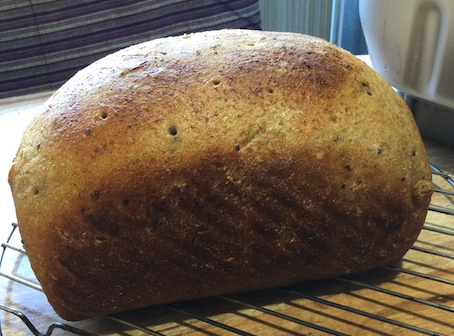
Slices:
Zoji Loaf

Oven Loaf

100% Whole Grain Version (35% whole rye; 65% whole wheat berries)
TFL post: https://www.thefreshloaf.com/node/72226/rusbrot-thsd-%C5%A1ventin%C4%97-duona-100-whole-grains
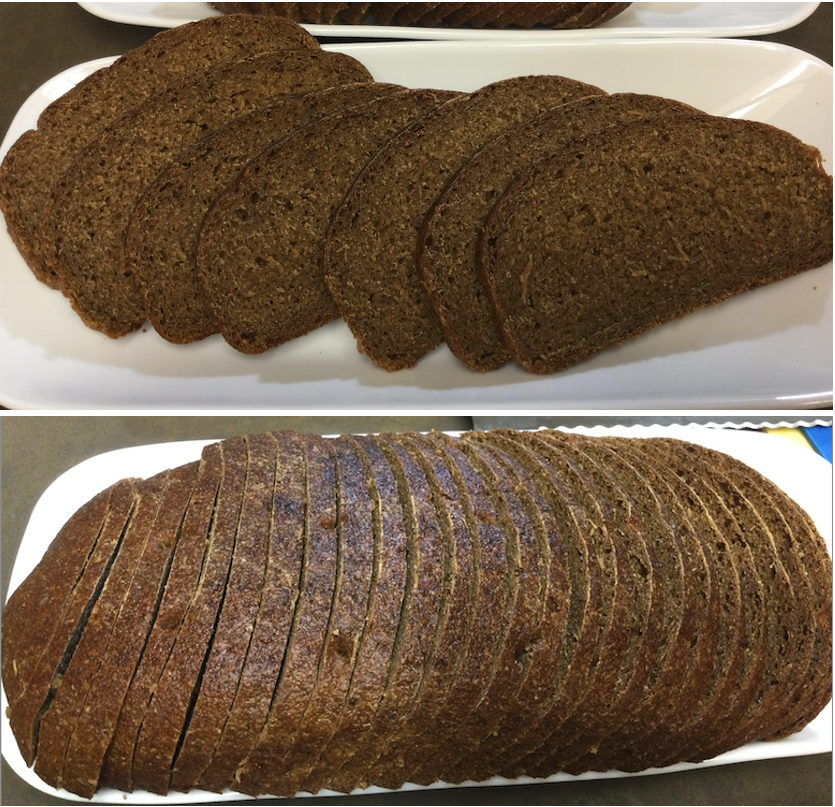
2023-04-16